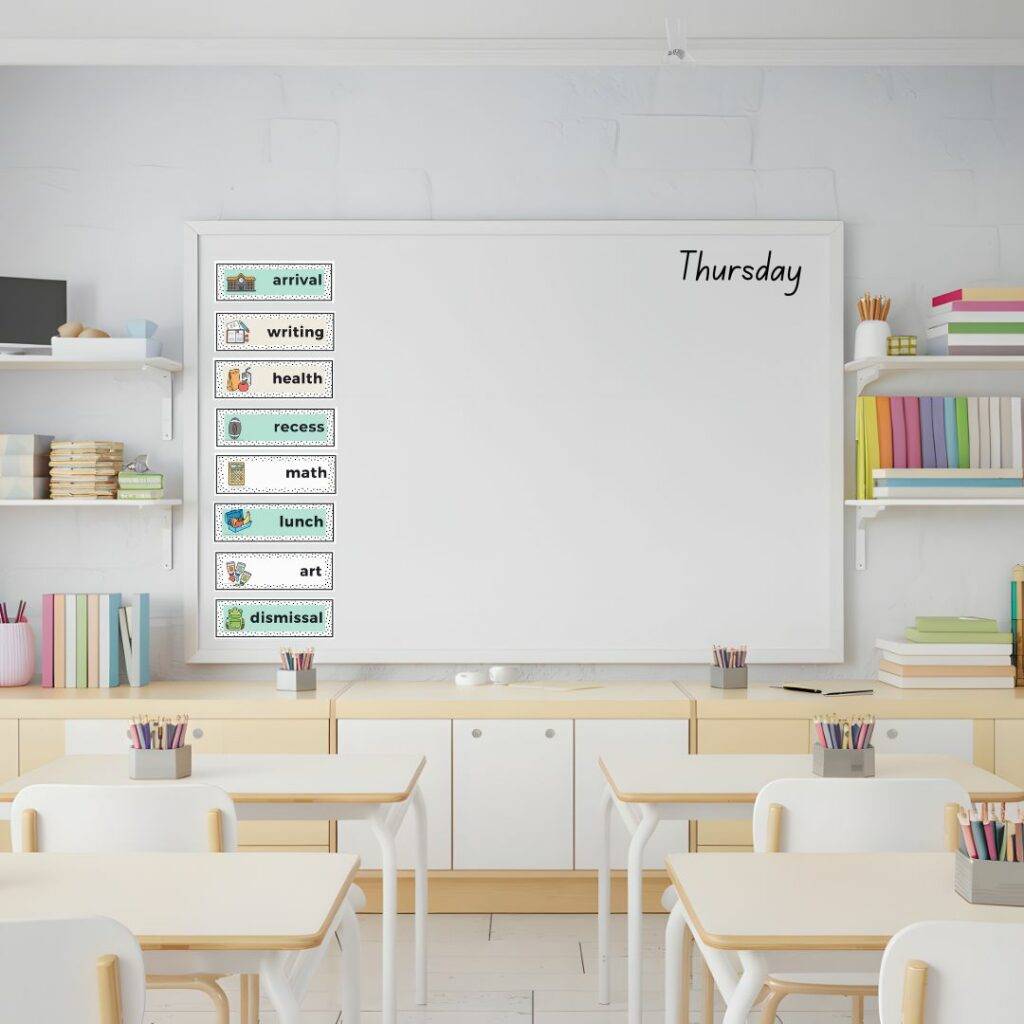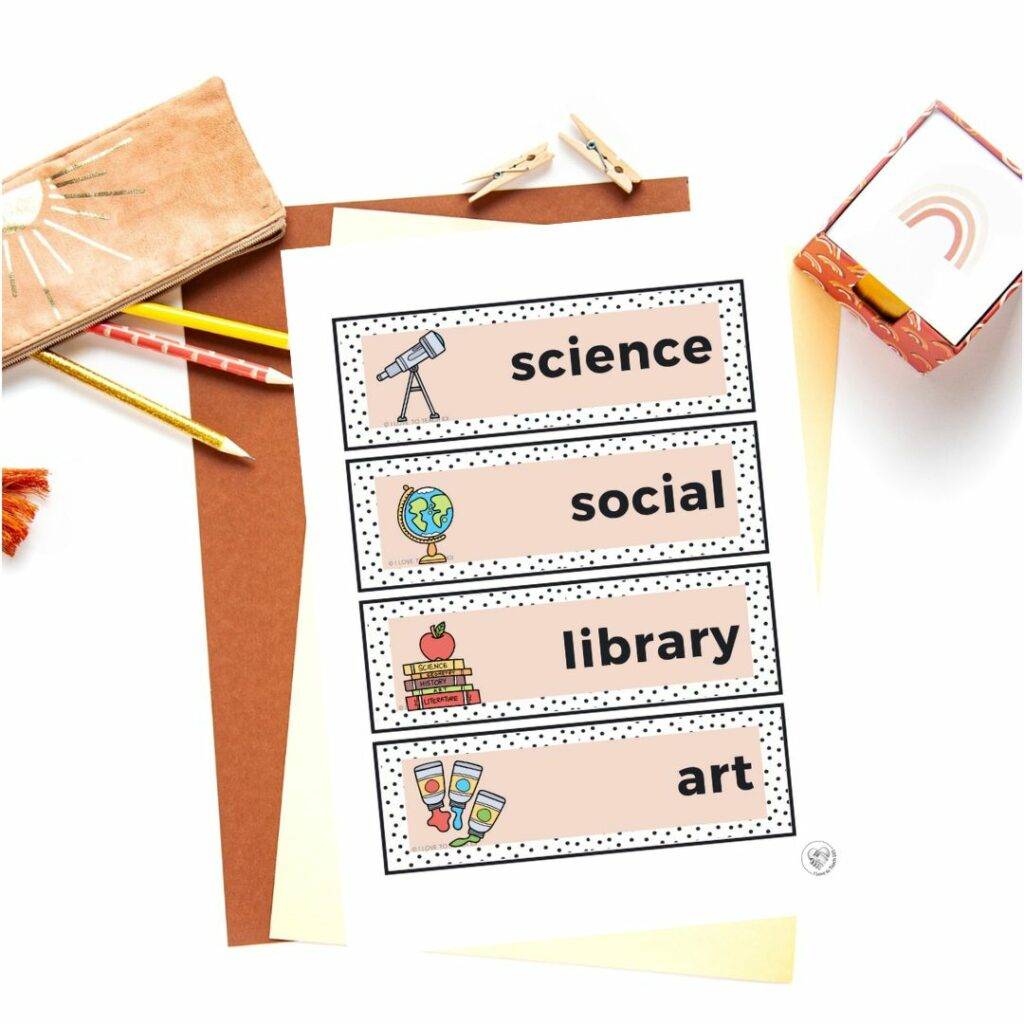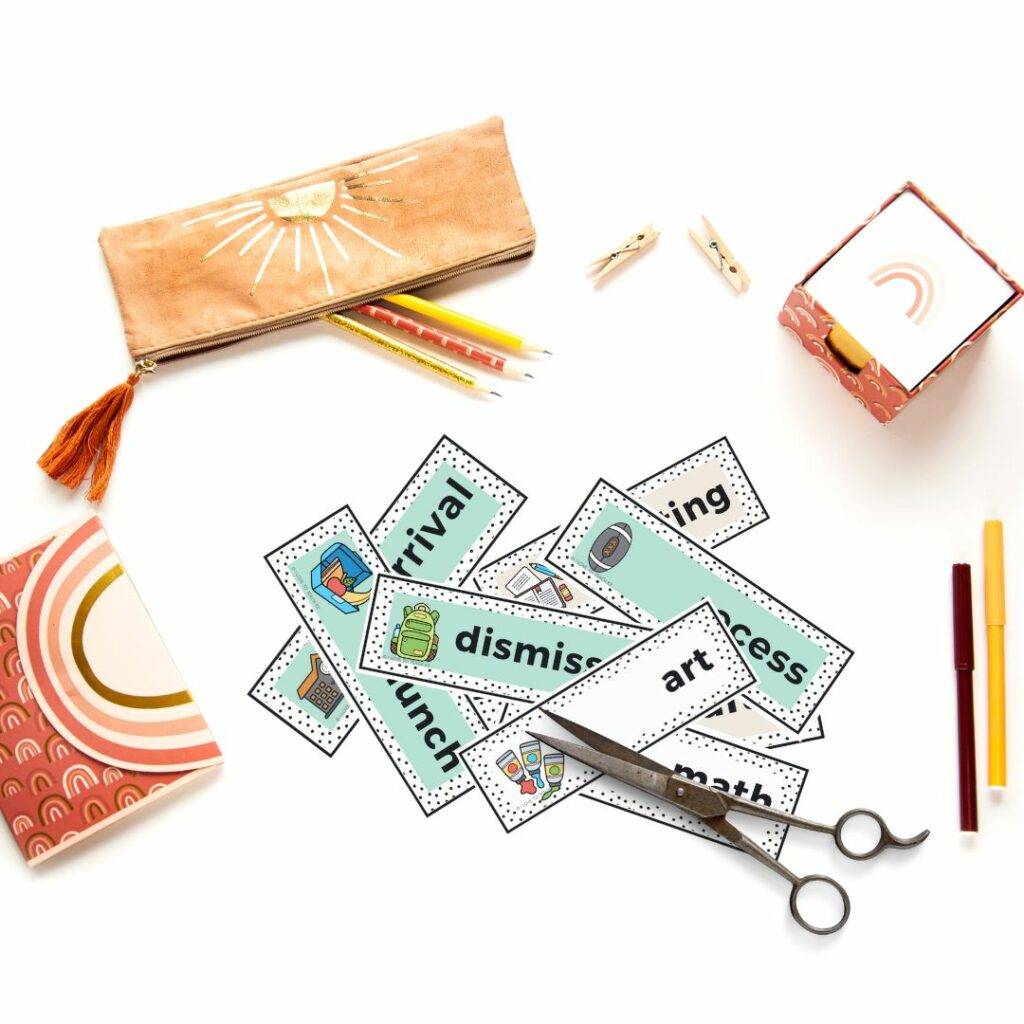How Schedule Cards Easily Boost Social and Emotional Learning

Uncover the transformative power of schedule cards and see how they enhance social and emotional learning (SEL) within your classroom. More than just decorative elements, these vibrant tools are crucial for orchestrating effective classroom management and enhancing student engagement.
What are schedule cards?
Schedule cards are more than just time-table indicators. They are visual cues that help students understand what’s expected of them throughout the school day. By outlining the day’s activities in a clear, engaging manner, these cards help reduce anxiety and uncertainty, paving the way for a smoother educational experience.
The power of visuals in learning
Visual aids are not just for presentations. In the classroom, they are crucial for reinforcing daily routines and expectations without constant verbal reminders. For young learners, especially those with additional needs like autism, visual schedule cards provide a consistent cue that helps them navigate their day more confidently and independently.
Boosting SEL with schedule cards
Let’s connect the dots between schedule cards and social and emotional learning. SEL is all about developing key skills such as self-awareness, self-management, social awareness, relationship skills, and responsible decision-making. Schedule cards play a pivotal role here:

1. Promoting structure and security
Schedule cards help establish a consistent daily routine that is crucial for creating a stable learning environment. This structure is especially beneficial for reducing anxiety among students who may struggle with unpredictability or change.
By clearly defining what to expect throughout the school day, students can experience a sense of security that makes it easier for them to focus on learning and interacting positively with others. This predictable environment supports the SEL component of self-management by helping students regulate their emotions and adapt to structured settings.
2. Encouraging independence and responsibility
Using schedule cards empowers students to take charge of their own learning experiences. They foster a sense of independence by allowing students to anticipate transitions and prepare for upcoming activities on their own. This autonomy supports the development of responsibility and self-sufficiency, core aspects of self-management in SEL.
As students become accustomed to following a clear schedule, they also learn the importance of time management and the ability to prioritise tasks, which are valuable skills both inside and outside the classroom.
3. Enhancing engagement and readiness
Clear and visible schedule cards inform students about the sequence of daily activities, reducing uncertainties about what each day entails. This clarity helps to mitigate feelings of anxiety and allows students to mentally and physically prepare for each part of their school day.
With this advanced knowledge, students can engage more fully in each activity, contributing to a more focused and effective learning environment. This readiness not only enhances their academic performance but also improves their social interactions, fostering better relationships and collaborative skills, which are integral to social awareness and relationship management in SEL.

Editable Schedule Cards: A Must-Have Resource
For instance, our set of 20 Dotty Schedule Labels, in four Boho-Neutral colours plus white, is perfect for this. Available for download, these cards can be printed, laminated, and even paired with magnetic strips if you’d like to make them easily movable on your whiteboard or other metallic surfaces.
If you love the idea of schedule labels but want to try them out first, we also have a FREE set of floral schedule labels that you can download and start using right away!
Practical Uses in Your Classroom
Incorporating schedule cards isn’t just about displaying them around the classroom; it’s about making them a part of your everyday teaching strategy. Here are some practical ways to use these cards:
1. Morning Set-Up
Schedule cards can greatly streamline the morning chaos by visually outlining the sequence of actions students need to take after entering the classroom. They act as silent guides, reducing the need for repetitive verbal instructions and helping students develop the habit of transitioning independently into the school day. For instance:
- Unpacking: Have a card indicating where students should place their backpacks, coats, and other materials.
- Morning Tasks: A card can direct students to complete essential start-of-day tasks like turning in homework or filling out their planners.
- Reading Time: Another card can invite students to begin a quiet reading period, helping them settle and focus as the day begins.
2. Activity Transitions
Utilising schedule cards for activity transitions can aid in smoothly moving students from one task to another, which is crucial for maintaining classroom flow and maximising instructional time. They help create a predictable routine, which is particularly beneficial in reducing anxiety and behavioural issues among students. Here’s how they can be used:
- Clean-Up Time: A card can remind students to tidy up their workspace before moving on to the next activity, promoting responsibility.
- Group Work to Individual Work: Transition cards can help shift the class’s focus from collaborative activities to independent tasks without confusion, preparing them mentally for the change in dynamics.
- Recess or Break Times: Displaying a card before transitions to breaks helps manage student expectations and minimises off-task behaviour as they anticipate what’s next.

3. Special Events
For days that break from the normal routine, special schedule cards can help manage student expectations and excitement. They keep the day organised and students informed about how to prepare and what to expect, making the event enjoyable and educational for everyone involved. These might include:
- Assembly Days: Use a special card to remind students about assembly etiquette or any changes in the normal schedule.
- Guest Visits: A card can prepare students for the arrival of visitors, prompting them to gather necessary materials or questions ahead of time.
- Field Trips: Highlight the day’s special activities and checklists needed for off-campus excursions.
Using schedule cards in these ways can greatly enhance the structure and efficiency of your classroom, making daily transitions smoother and helping students internalise routines and expectations.
To further understand the significance of routines in fostering a stable environment for children, consider the insights from a neuropsychology expert at Children’s Health. They elaborate on how routines build independence, reduce anxiety, and enhance planning skills among young learners, which are key aspects of social and emotional learning (SEL). For a deeper exploration of creating effective routines for children, check out this comprehensive article: How to create a daily routine for kids.
Bringing it all together
So, why not give our schedule cards a try? They’re simple, effective, and can transform the dynamics of your classroom. By aligning daily routines with educational goals, you not only maintain an organised classroom but also enhance the learning capabilities of your studes
Remember, every little bit of structure you add to your classroom helps in building a better learning environment. And with schedule cards, you’re not just organising your day; you’re enhancing the educational journey of each student.

I was recommended this website by my cousin I am not sure whether this post is written by him as nobody else know such detailed about my difficulty You are wonderful Thanks